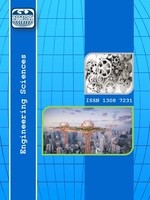AKILLI SYSTEMLER KULLANILARAK SERAMYKLERDE DEFORMASYONUN TAHMYN EDYLMESY
Seramik üretim sektöründe yeni ürün tasarymlarynda uygun biçimin bulunmasy için deformasyonlar nedeni ile çok sayyda denemeler yapylmaktadyr. Bu denemeler i?çilik kaybyna ve maliyetin artmasyna neden olmaktadyr. Bu nedenle çaly?mada, seramik sektöründeki bu kayyplary azaltmak için bir bilgisayar yazylymy geli?tirilmi?tir. Seramik döküm çamuru ve kuvars kullanylarak farkly bile?imlerde silindirik formda numuneler hazyrlanmy?tyr. Bu numuneler kurutulduktan sonra 3 B tarayycy ile taranarak ve klasik metotlarla ölçüleri alynmy?tyr. Daha sonra bu numuneler farkly sycaklyklarynda ve sinterle?me sürelerinde seramik fyrynynda pi?irilerek tekrar ayny yöntemlerle ölçümleri alynmy?tyr. Böylece silindirik numunelerin taban, yanal yüzey ve a?yz bölgelerinde deformasyonlar belirlenmi?tir. Bu deneysel bilgiler y?y?ynda bulanyk sistem tasarlanmy?tyr. Seramik numunelerin bile?imleri, pi?irme sycakly?y ve sinterle?me süreleri bulanyk sistemin giri? bilgileri olarak deformasyon miktarlary da çyky? bilgisi olarak kullanylmy?tyr. Geli?tirmi? oldu?umuz bulanyk sistem, silindirik formlaryn taban deformasyonunu %80, yanal yüzey deformasyonunu %77,5 ve a?yz deformasyonunu %55 oranynda ki do?rulukla tespit edebilmektedir.
DETERMINING OF DEFORMATION ON THE CERAMICS USING INTELLIGENT SYSTEMS
In the development and design of new products in ceramic industry unlimited number of trials has to be carried out to obtain the appropriate format due to the deformation. These trials lead to increased costs and loss of labor in the production stage. In this study, it is aimed to develop computer software to reduce these losses in the ceramic industry. In this work, in different compositions, firing temperatures and sintering times cylindrical form samples are created. These samples, after the drying process have been scanned with the 3D scanner at the same time measured using classical methods. Later on these samples are fired at different sintering times and temperatures in ceramic firing and measured using the same methods. Thus the deformations in the base, side and mouth regions of the cylindrical samples are identified. In the light of this experimental data fuzzy systems have been designed. In the fuzzy system, the firing temperature, sintering time and composition of ceramic samples have been used as the input data while the amount of deformation is used as the output data. In the fuzzy system we have developed, an accuracy of 80% for the base deformation, 77.5% for the edge deformation and 55% for the mouth deformation of the cylindrical form have been achieved. However, in determining the deformation of the square form the targeted results have not been obtained.
